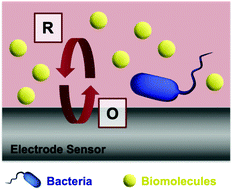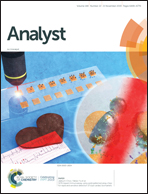Electrochemical sensors for rapid diagnosis of pathogens in real time
Abstract
Microbial infections remain the principal cause for high morbidity and mortality rates. While approximately 1400 human pathogens have been recognized, the majority of healthcare-associated infectious diseases are caused by only a few opportunistic pathogens (e.g., Pseudomonas aeruginosa, Staphylococcus aureus, Escherichia coli), which are associated with increased antibiotic and antimicrobial resistance. Rapid detection, reliable identification and real-time monitoring of these pathogens remain not only a scientific problem but also a practical challenge of vast importance, especially in tailoring effective treatment strategies. Although the development of vaccinations and antibacterial drug treatments are the leading research, progress, and implementation of early warning, quantitative systems indicative of confirming pathogen presence are necessary. Over the years, various approaches, such as conventional culturing, straining, molecular methods (e.g., polymerase chain reaction and immunological assays), microscopy-based and mass spectrometry techniques, have been employed to identify and quantify pathogenic agents. While being sensitive in some cases, these procedures are costly, time-consuming, mostly qualitative, and are indirect detection methods. A great challenge is therefore to develop rapid, highly sensitive, specific devices with adequate figures of merit to corroborate the presence of microbes and enable dynamic real-time measurements of metabolism. As an alternative, electrochemical sensor platforms have been developed as powerful quantitative tools for label-free detection of infection-related biomarkers with high sensitivity. This minireview is focused on the latest electrochemical-based approaches for pathogen sensing, putting them into the context of standard sensing methods, such as cell culturing, mass spectrometry, and fluorescent-based approaches. Description of the latest, impactful electrochemical sensors for pathogen detection will be presented. Recent breakthroughs will be highlighted, including the use of micro- and nano-electrode arrays for real-time detection of bacteria in polymicrobial infections and microfluidic devices for pathogen separation analysis. We will conclude with perspectives and outlooks to understand shortcomings in designing future sensing schemes. The need for high sensitivity and selectivity, low-cost implementation, fast detection, and screening increases provides an impetus for further development in electrochemical detectors for microorganisms and biologically relevant targets.

- This article is part of the themed collection: Versatile Electrochemical Approaches


 Please wait while we load your content...
Please wait while we load your content...